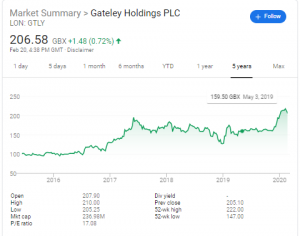
The Future Lawyer Weekly Update – w/c 17th February
February 19, 2020
Manchester City and UEFA Financial Fair Play – What Happened? Why? And What’s Next?
February 20, 2020The Legal Services Act 2007 (LSA) shook up the traditional partnership model of UK law firms by allowing firms to register as Alternative Business Structures (ABS). An ABS allows non-lawyers to participate in the ownership of law firms, unlike the traditional model where the profits of a firm could only be shared between its partners.
There have been over 500 ABS registrations since the LSA came into force and these have been in a variety of forms. We have seen the rise of so-called “Tesco Law” with well-known brands such as Tesco and Co-op starting to offer low value legal services like will-writing. We have seen the Big 4 accountancy firms entering the legal services market, something TSL covered in a previous article. Some firms such as Irwin Mitchell have used the flexibility of the company structure to offer complementary non-legal services (e.g., debt collection and insurance claims) under subsidiary companies, alongside their legal services.
Relatively few firms, however, have decided to make an Initial Public Offering (IPO) and list on the UK stock market. When a company makes an IPO, it switches from being a private company owned by relatively few individuals to being owned by members of the public with shares that can be freely bought and sold on the stock market. There are complex rules governing IPOs, with companies required to publish lengthy prospectuses disclosing extensive information about themselves to prospective buyers.
Who Has Taken the Plunge?
So far, only a handful of firms have gone public. The first was Gateley, which became Gateley plc in 2015. The firm was valued at £100 million and raised £30 million on listing.
The second firm was Gordon Dadds in 2017, which raised £20 million, nearly doubling the market capitalization of the firm.
The largest firm to go public was DWF in 2019. The firm was valued at £366 million, large enough to be listed on the main board of the London Stock Exchange. All other firms who have gone public were listed on the Alternative Investment Market (AIM), the sub-market of the London Stock Exchange reserved for smaller companies.
Pros and Cons of Going Public
For a partner in a law firm, going public is not necessarily an attractive option. In a traditional partnership, partners are answering to themselves. Although many firms have leadership committees, many important decisions (e.g. the decision to open a new office or to appoint a new partner) are made by a vote of the partners – one partner, one vote. A listed law firm is run like any other public company, with a board of directors who are responsible for running the company for the benefit of the shareholders.
Not only does this mean losing an element of control, it may also mean a pay cut. In an equity partnership, the firm’s profits are largely distributed back to the partners. However, nobody is going to buy the shares of a company that pays all of its profits back to its workers. Shareholders want to see profits distributed in the form of dividends or reinvested back in the company to help to grow its value.
The obvious benefit to going public is the immediate cash injection. As the examples above show, when a law firm floats, it puts a certain amount of its shares up for sale, the proceeds of which are then the firm’s to use.
Some of the firms who have gone public have used these proceeds to acquire other firms. For example, Gordon Dadds acquired the international shipping specialist Ince & Co. Gateley’s website shows that it has made six acquisitions since its listing, including the law firms GCL Solicitors.
Firms who have used the ABS model to offer more than just legal services can use the proceeds to invest in these extended businesses. For example, DWF, a firm known for its innovation, intends to invest further in aspects of its business like DWF 360, its software provider division.
Gateley has also launched a share option scheme, which allows employees who stay with the firm to acquire shares in it. This is a common mechanism used by companies to incentivize their staff, encouraging employees to stay at the company and to increase its value (and the value of their shares).
Partners who decide to list their firm will hope that these benefits lead to their ownership share in the firm increasing in value, exchanging this long-term pay-off (e.g., if they retire and decide to sell their shares) for the short-term pay cut.
Has it Worked So Far?
In order to drive up the value of their shares, law firms will need to create demand for them. The concept of investing in law firms is so new that investors may be nervous about buying these shares. So far, however, the gamble seems to be working. A look at the share value of Gateley shows that they have doubled since the firm listed in 2015.

However, it is still early days in the Law Firm plc experiment and time will tell whether more firms follow this example. Many eyes will be on DWF in particular, as the largest firm to float, to see if this can be an effective model for a major international firm.





